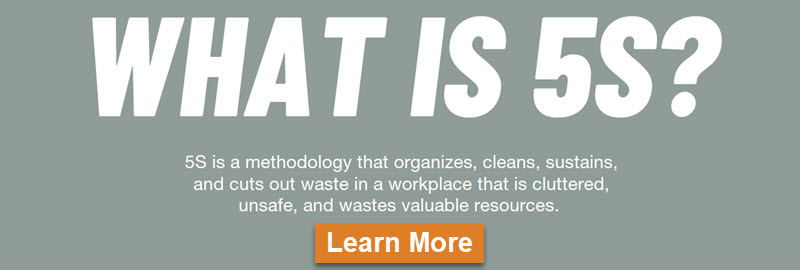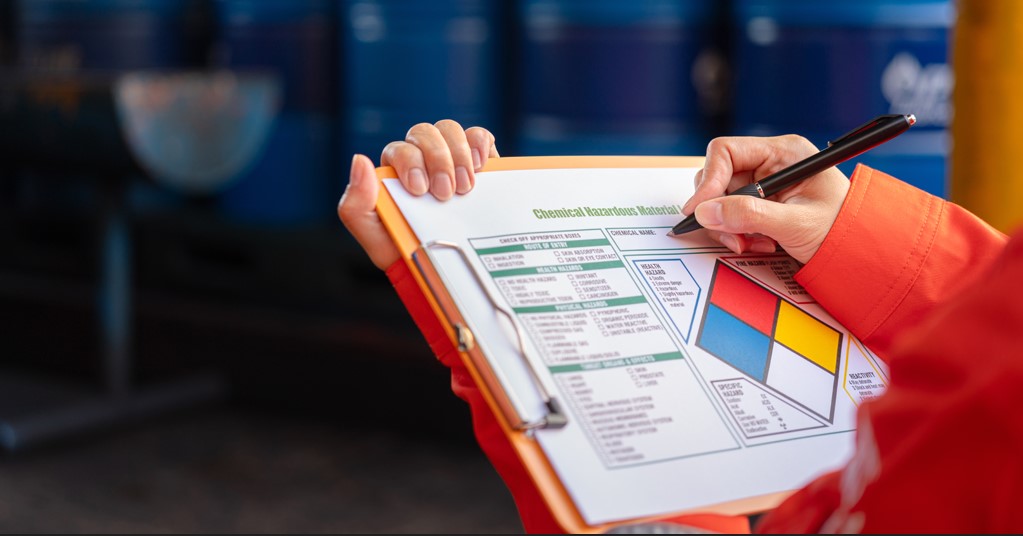
Make Your 5S Red Tag Program Successful.
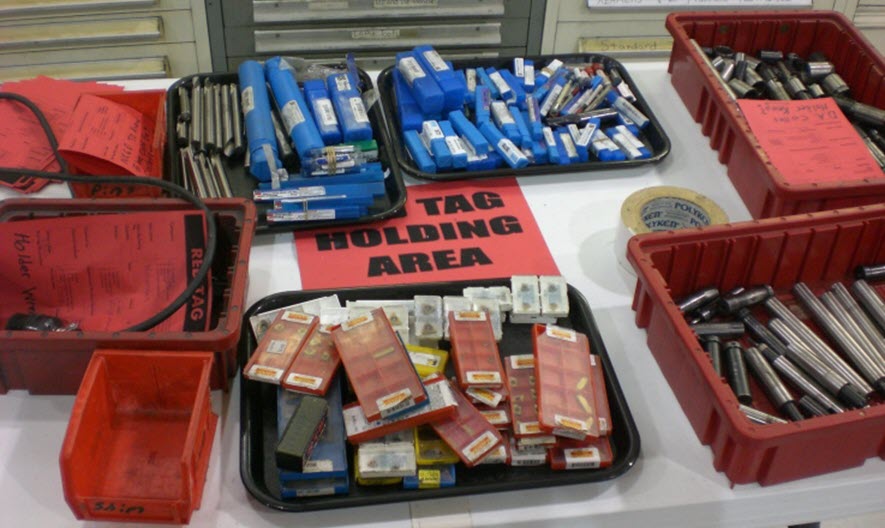
In any business, starting 5S can seem like an overwhelming task. The idea of organizing and sorting through hundreds of items in the workplace can leave one questioning the best way to start. I wish just snap your fingers and miraculously meet your 5S goals, right?
The first step in 5S is “Sort,” and it doesn’t have to be difficult. With an effective 5S red tag strategy, you can clear out the ‘dirt’ – also the Japanese word for red – and cut waste from your facility.
Using 5S Red Tags
The idea is to sort items so it’s easier to organize your workspace. Think of 5S red tags as a visual management tool that helps your team successfully sort items around your facility. Sort the items you need and if they’re not being used move them out. Use 5S red tags to identify items in the work area that don’t bring value, haven’t been used in a while, and/or need to be disposed of. Identify the item type, reason for tagging, the appropriate action, the date and initial it.
In addition to clearing out space, red-tagging motivates people to start changing behaviors. Rather than simply dumping stuff in a corner somewhere, the workforce starts to consider the impact of their actions.
Eliminate items that are unnecessary or misplaced by moving them to a designated red tag area. With a system, you can answer what is this? Should I keep it, store it, or dispose of it? You don’t have to repeatedly figure out why an item is placed in a specific location. Just look at the tag that’s been placed on the item and determine what you need to do with it.
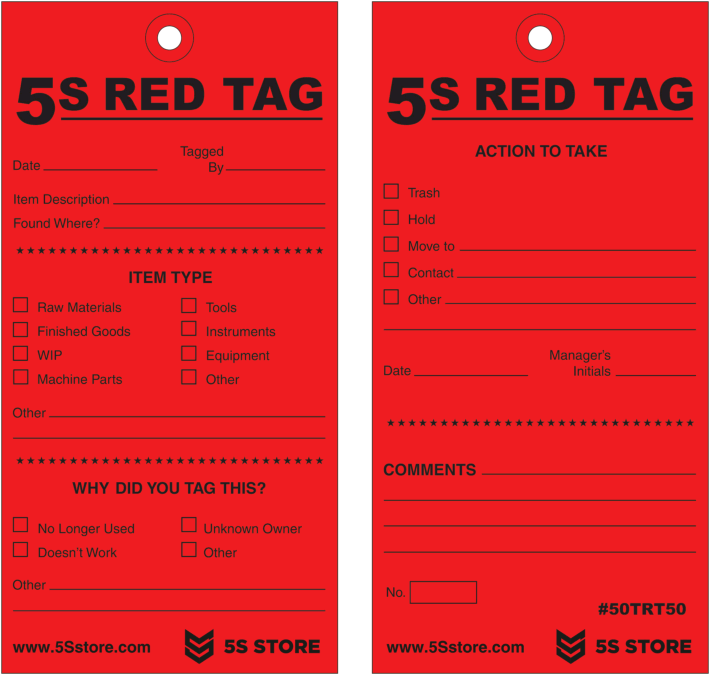
How long should items stay in the red tag area?
Has your red tag area become nothing but a dumping ground?
If so, decide now to clean it up and to keep it orderly and maintained throughout the year. You’ll find this goes a long way at helping sustain the 5S program.
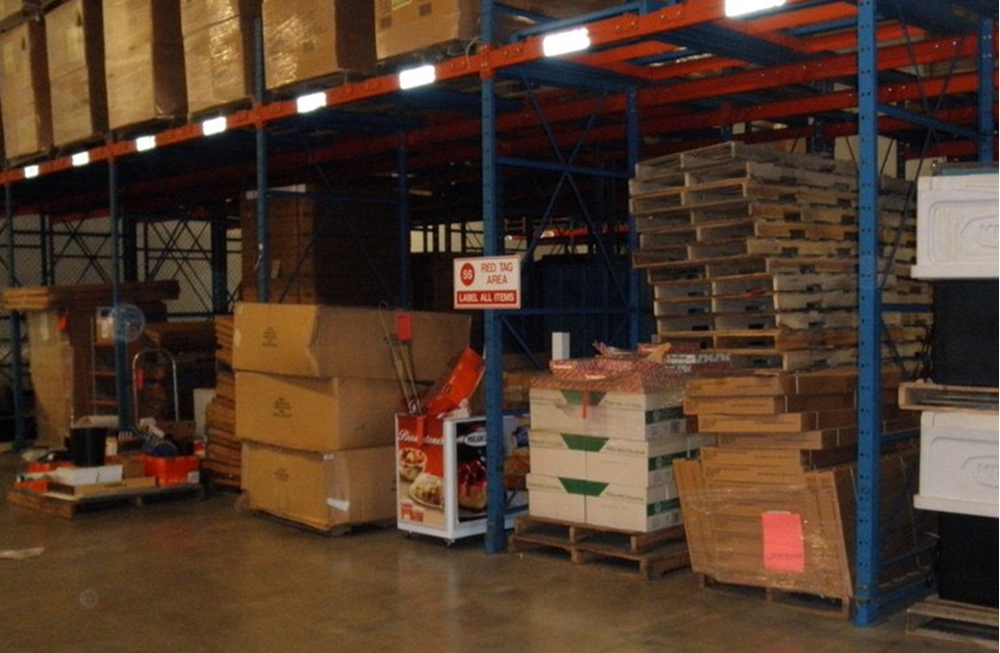
Remember, the red tag area is a temporary location for items. It’s not a forever home. At most, items should stay in the holding area for no longer than a month. Or, until you’ve determined whether they bring value or waste into your business.
5S Red Tag Options
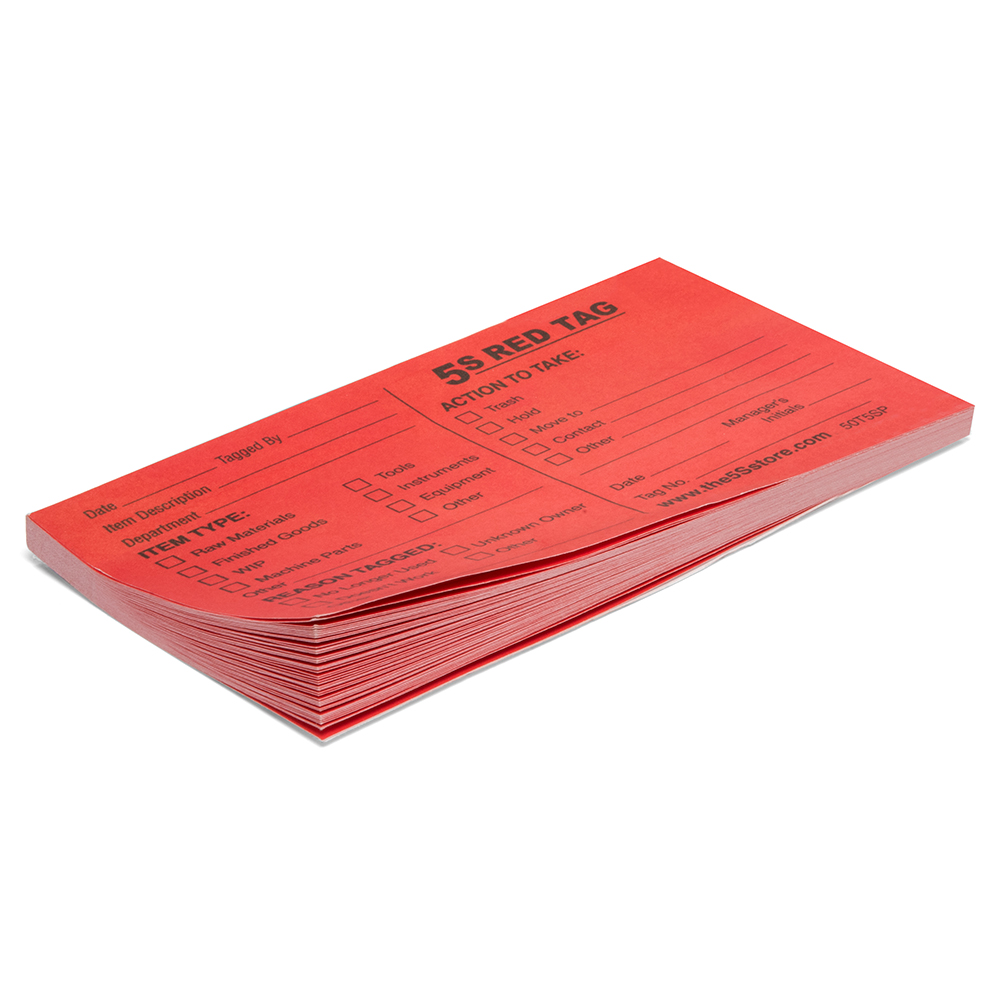 | 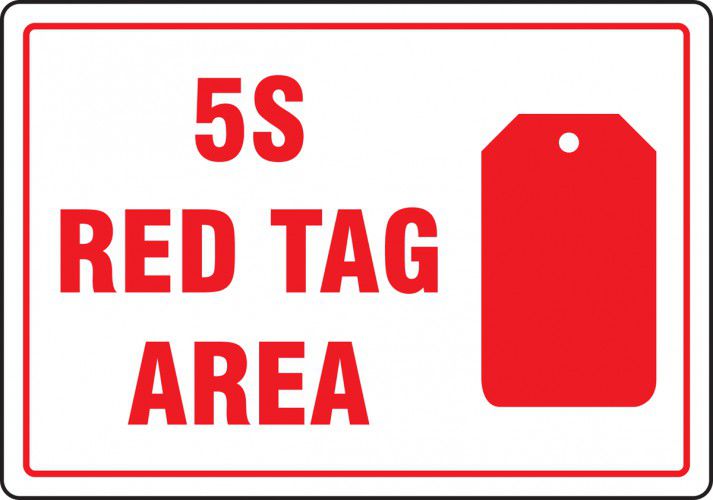 | 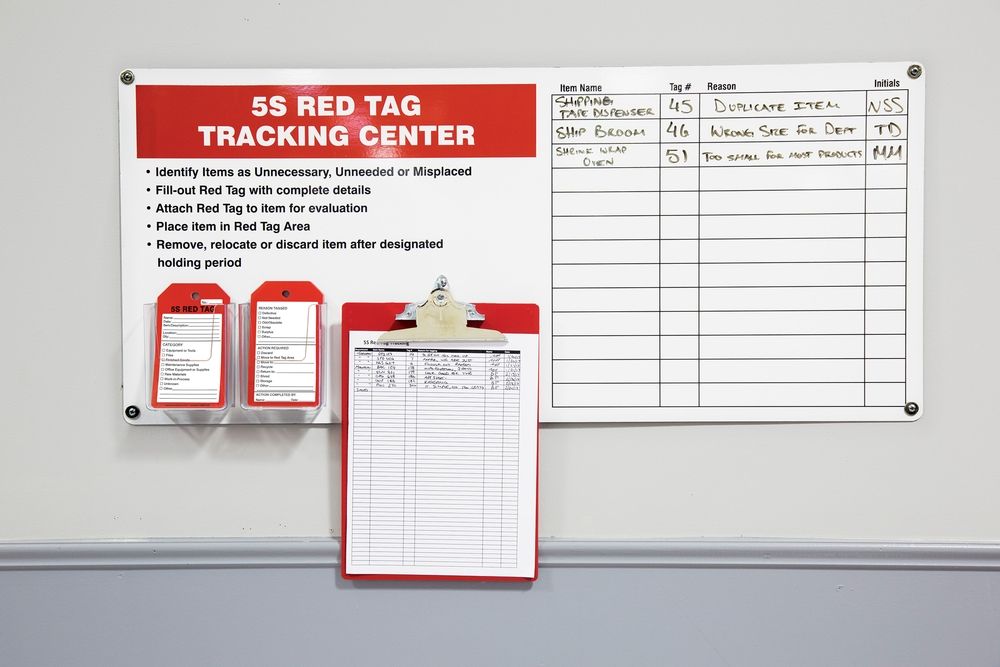 | 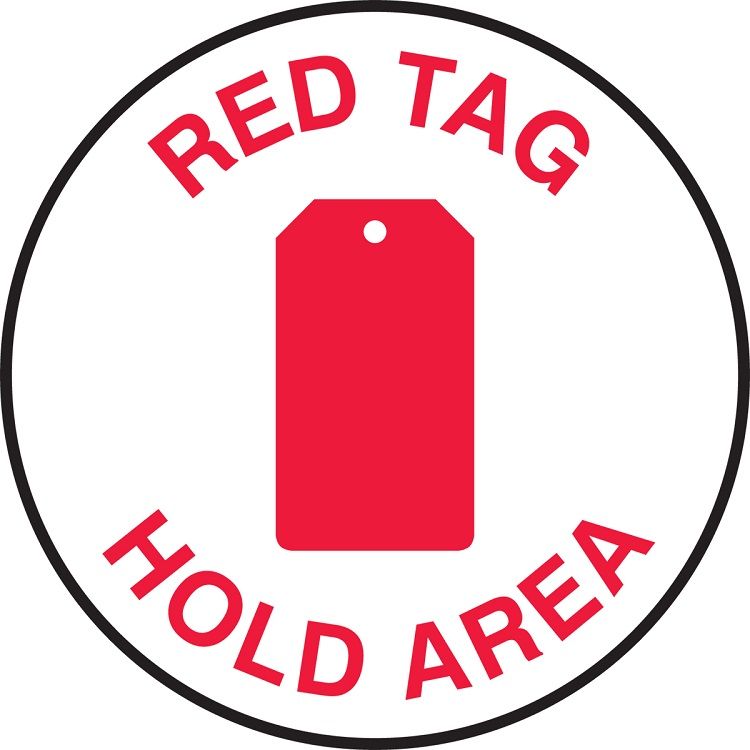 |
Keep your red-tagging system beneficial to your business – not a dumping ground of unwanted or questionable items. Hold your workers accountable for sorting items to the appropriate locations. Stay on top of items that need to be sorted throughout your workplace, so you can create organization and eliminate waste.
Accountability-Auditability
Often times, the initial red tag event is full of energy and success. The team gets together and removes a bunch of junk and unnecessary items from the area to a designated Red Tag Area where decision-makers will disposition the items. Regrettably, the first go-around is often the last. The Team fails to designate an owner to the area.
Continuously monitoring the red tag area will keep unnecessary items moved to the right locations. To have a successful 5S red-tagging system, a team member “the owner” should be held accountable for ensuring the items in the designated space are moved out of the area often.
Have the area owner review the material on a weekly basis. Additionally, this owner must be held accountable for dispositioning material on a set schedule. For example, decide that nothing should remain in the red tag area for longer than four weeks. During routine 5S Audits, note the age of the items in the red tag area and determine if it exceeds this time frame.
As with all things 5S, Accountability is the KEY to sustaining the improvements.
Deploy your 5S red tag program when:
- You need more visual control over your sorting processes.
- The work area is large and/or includes multiple departments.
- The sorting process will take a lengthy period of time and you need to keep track of unnecessary items.
- You identify items that don’t work and are unnecessary.
- You need to separate clutter to specific locations.

Use 5S Red Tags to Optimize your Organize
Schedule red tag launches.
Like winter and spring cleaning, a good red tag strategy will be an ongoing benefit to your company. Red-tagging should be a continuous process – one that never has an ending date. Perhaps divide your workplace into sections to red-tag. Like cleaning, red-tagging should regularly be scheduled.
Target areas in your factory, production floor, or processing plant to ensure implementation of sorting and checking of inventory, machinery, and equipment. Red tags are easily noticeable and help shine a light on how much clutter workers hold on to and the amount of space that’s wasted over time.
Communicate your plan.
Be upfront with your team about the anticipated red tag completion date. Establish criteria for the implementation of the red tag strategy. Your employees need to know when the items they are tagging need to find an appropriate home or be disposed of. The hardest part might be trying to convince workers that certain things aren’t needed to get the job done.
Tell your coworkers how you’d like to utilize the newly created space in a more productive way. Do you have plans to buy a new machine? Freeing up space allows for new equipment to drive more revenue but it also helps improve the flow of materials and people that bring value. Communicate your plans to get your team excited about the new improvements.
Place someone in charge.
A 5S red-tagging strategy won’t run itself. You’ll need someone to actually manage the process — and 5S red tag supplies to make it happen. When someone is placed in charge of the red-tagging strategy, they can eliminate accumulation and keep items moving in the right direction. (Sometimes personal ties to specific tools and equipment can stand in the way of the sorting phase of 5S.)
Accumulation can happen in any red tag area. That’s why you need someone in charge to review the information on the tag and take the appropriate action to organize or eliminate the items.
5S red tags identify items in the work area that don’t bring value. Red tags make it easier to sort items so you can stay organized while you organize.
